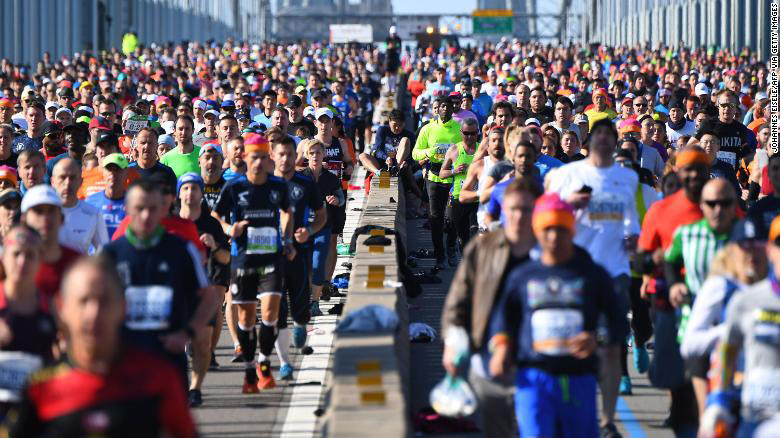An optimistic note was sounded in a recent article in none other than The New York Times that reported that marathon organizers are hoping their events can return this fall with new protocols and precautions.
Among the possible new protocols: The New York City Marathon usually has 55,000 runners. Officials recently discussed a field of roughly 30,000, among other possibilities.
There will probably be thousands of fewer runners and it may take them much longer to start the race due to staggered starts. Crowds are likely to be smaller than usual along the race route.
“Is the marathon going to happen? Absolutely,” Ted Metellus, the race director for the New York City Marathon, planned for Nov. 7, told The New York Times. “It’s what it is going to look like that’s in question.”
Organizers admit that no matter what plans they announce in the coming weeks and months, everything is subject to change.
Again in the NYT article: “Heaven knows what things may intervene between now and the race,” said Tom Grilk, chief executive of the Boston Athletic Association, which conducts the Boston Marathon, scheduled for Oct. 11. “What we’ve learned is that the signal feature of this pandemic is uncertainty.”
Plans for the marathons in New York, Boston and Chicago, which is scheduled for Oct. 10, have special significance because they are parts of the World Marathon Majors series. Those races – along with the three major marathons in London, Berlin and Tokyo – offer the most prize money, attract the best marathoners and “serve as bucket-list events for runners of all abilities.”
The glut of races this fall — the ones in Boston, London and Tokyo usually take place in March and April — has sent runners scrambling. Elite runners, who usually do one race in the spring and one in the fall, must decide which major race to run. The London Marathon is supposed to take place on Oct. 3. Tokyo’s is scheduled for Oct. 17. Berlin’s is planned for Sept. 26.
Everyday runners are weighing which race will give them the best chance of entry. The Los Angeles Marathon recently cluttered the schedule further, announcing it would hold its race, which normally occurs in February, on Nov. 7, the same day as New York’s.
In a typical year, the Boston, Chicago and New York events draw a combined total of more than 130,000 runners.
Carey Pinkowski, the chief executive for the Chicago Marathon, told the NYT that they have not given up hope that his race can produce the nearly 46,000 finishers it did in 2019, but he said this “transition year” was likely to produce an altered event.
“I don’t think anyone expects it to be at the same grand level,” Pinkowski said. “Is it going to look different? Absolutely. Is it going to feel different? Absolutely.”
Officials are trying to figure out some kind of testing regimen for participants and volunteers. Also, they are running through a series of ideas that account for the size of the roads, space between runners and logistics at the start line to keep runners safely distanced for as long as possible.
To compete, runners will probably be required to test negative for the coronavirus in the days leading up to the races, though organizers must still figure out when tests would take place, who would pay for them and the consequences for someone who tests positive.
In New York, which typically plans for a field of 55,000 runners, officials recently discussed the possibility of a field of roughly 30,000 runners. But even a field cut nearly in half would require longer street closures to allow more spacing between participants.
In the past, it has taken about six minutes to release 5000 runners. Under one plan that has been discussed, according to people with knowledge of the planning, about a dozen runners would start every four seconds, which would mean taking roughly 30 minutes to get 5000 runners across the start line if the process runs at optimum efficiency.
Metellus told The new York Times that New York Road Runners, the organization that owns the marathon, and city officials were still weeks away from locking in a plan, and there were proposals for a race as large as 45,000 runners and for fewer than 25,000 runners.






